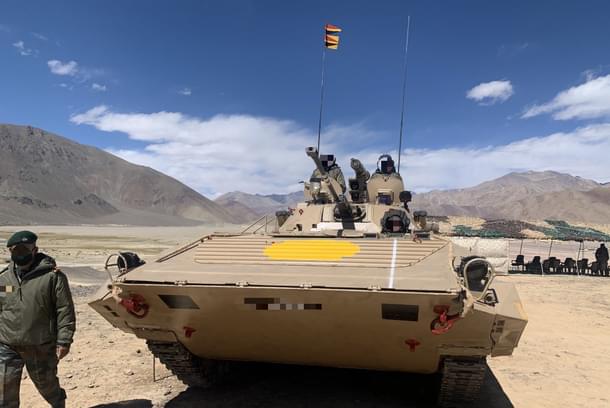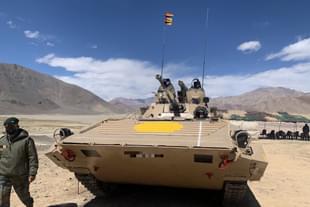News Brief
Battle Of Nerves: How India Negotiated The Ladakh Disengagement Deal With China
Swarajya Staff
Feb 13, 2021, 01:38 PM | Updated 01:38 PM IST
Save & read from anywhere!
Bookmark stories for easy access on any device or the Swarajya app.


Earlier this week, Indian and Chinese forces, which had remained deployed in eastern Ladakh through the winters and for nearly nine months since April last year, started disengaging in areas north and south of the Pangong Lake.
Negotiations for disengagement, which stretched over nine rounds, was a “constant battle of nerves”, says journalist Nitin Gokhale.
India’s prolonged and difficult negotiations, he writes, resulted in a “rare written document” that details sequential steps of the disengagement process, the places and distances the armoured elements and other weapons platforms would be moved, and how talks over remaining issues will take place.
“Patience is the key in negotiating with the Chinese. We realised this early. So despite tremendous pressure from critics and detractors to get an agreement at the earliest, we never succumbed,” he quotes “a key participant in the process” as saying.
During the seventh round of negotiations, the People’s Liberation Army offered to withdraw to their post east of Finger 8, near the Sirijap Complex, on the north bank, but wanted to continue patrolling up to Finger 5, at least once a month, and sought to confine Indian forces to their base near Finger 3.
“India refused the bait,” he writes.
“We kept chipping away at their proposals and putting forth counter-demands. We said we will not vacate the heights on the south bank of Pangong Tso until they agreed to pull back completely to Sirijap,” he quotes the source as saying.
In the eight and ninth round, as China conceded, India pressed for more — “creation of a no-patrolling zone in the area between Finger 3 and Finger 8 until military and diplomatic discussions were held to find a permanent solution”.
In the area south of the Pangong Lake, where Indian forces had occupied tactically important heights on the Kailash Range to preempt China, Indian and Chinese tanks were only 100 feet apart as some places. It was like “sitting on a tinder box”.
The Indian side used the situation in the south as a leverage during negotiations to get what it wanted on the northern bank of the Pangong Lake.
“India gave the go-ahead to the agreed text on February 8. The Chinese sent back a written document on February 9, signed it on the morning of February 10 and started to withdraw heavy armour from the peaks in Chushul immediately,” he writes.
While China pulled back its tanks to Rutog, around 90 km away from Moldo, the Chinese base close to the peaks occupied by India, Indian tanks withdrew to Loma, a small hamlet near Nyoma, around 90 km from Chushul.
“It appeared as if the Chinese were in a hurry to complete the disengagement quickly, perhaps because the Chinese New Year begins today (February 12),” Gokhale quotes a source as saying in his report on disengagement.




